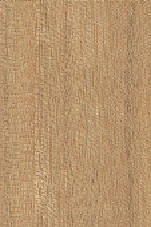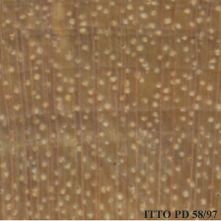
HAPLOLOBUS (Haplolobus floribundus)
Trade Name
Haplolobus
Scientific Name
Haplolobus floribundus (K. Schumann) H.J. Lam
Family
BURSERACEAE
Common Names
Ode mayoko (Indonesia); Lian (Indonesia); Enei (Indonesia)
Scientific Name Synonyms
Haplolobus moluccanus H.J Lam; Haplolobus leeifolius (Lauterb.) H.J Lam; Haplolobus celebicus H.J. Lam
Description Of The Tree
Botanical Description
It is a dioecious, small to medium-sized tree up to 30 m tall. The bole is straight, branchless for up to 20 m, up to 60 cm in diameter, sometimes with small buttresses.
Natural Habitat
Haplolobus floribundus is found mostly scattered in primary, rarely secondary rainforest, from the sea level up to 1,980 m of altitude. It is most common on hills and ridges, and it generally occurs on well drained, alluvial or clayey soils.
Non Timber Uses
H. floribundus wood is reported to have an exceptional wide range of density variation, from 0.34 up to 1.24 g/cm3 in air dried condition.
Wood Identification
Anatomic Description Of Wood
Wood diffuse porous. Tangential diameter of vessel lumina 100 micras or less (very small). Colored deposits in heartwood vessels. Vessels per mm2 more than 20 (very abundant). Simple perforation plates. Vessel-ray pits similar to intervessel pits in size and s Occasionally apotracheal axial parenchyma diffuse and/or diffuse in aggregates. Paratracheal axial parenchyma scanty and/or vasicentric. Axial parenchyma aliform. Occasionally axial parenchyma confluent. Prismatic crystals in chambered axial parenchyma cells 4 to 10 rays per mm (medium). Body ray cells procumbent with mostly 2 to 4 rows of upright and/or square marginal cells (Kribs-II). Body ray cells procumbent with one row of upright and/or square marginal cells (Kribs-III). Fibers with simple to minutely bordered pits.
-
 Wood Macro Photo Radial Plane
Wood Macro Photo Radial Plane
-
 Wood Micro Photo Of Transversal Section
Wood Micro Photo Of Transversal Section
Availability
Cites Status
Unrestricted
General Wood Description
Color
The heartwood varies from pale brown to pink brown. Denser material usually a little darker in color, not clearly demarcated from the sapwood.
COLOR INDEX (1=Black, 7=Light yellow,white)
5
Grain
This timber usually has straight or wavy grain.
Texture
Texture is usually medium to coarse.
Natural Durability
This species is prone to blue stain, early anti-stain treatment is recommended.
Natural durability index (1= Very high durability, 7=Vey low durability)
6
Wood Physical Properties
Basic Density or Specific Gravity (O.D. weight/vol. green) (g/cm³)
0.52
Air-dry Density (Weight and volume at 12%MC) (g/cm³)
0.57
Drying Defects
Ease of Drying: The timber air dries rather slowly, usually without serious defects. Boards 12.5 mm thick take about 3 months to air dry. Drying Defects: Slight checking and end splitting may occur.
Wood Chemical Properties
Wood Mechanical Properties
Bending Strength (MOR),12%MC (kgf/cm²)
397
Stiffness (MOE) 12%MC (kgf/cm²)
46415
Compression parallel to fiber 12%MC (kgf/cm²)
428
Compression perpendicular to fiber 12%MC (kgf/cm²)
76
Shear strength radial 12%MC (kgf/cm²)
127
Janka hardness (side) 12%MC (kgf)
567
Janka hardness (end grain) 12%MC (kgf)
567
Workability
Rotary Veneer Cutting
This species can be used for lamination.
Sliced Veneer
This species can be used for lamination.
REFERENCED USES
End Uses Summary
HOUSING GENERAL, PLYWOOD AND VENEER
General Housing
- 10 - Silica in Timbers
Panels, Veneers
- 25 - Directory of Timber Trade Malaysia
Please Provide Information To View Producer Information